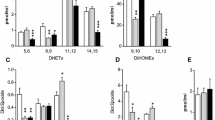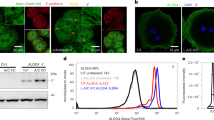Abstract
The interaction of enterodiol and the well-described polyphenol epigallocatechin gallate (EGCG) with hepatic membranes has been matter of interest in the last few years. On one hand, EGCG is only able to bind to the phospholipid polar head groups, as it has been already described in synthetic lipid bilayers and erythrocyte membranes but cannot get inserted into the hydrophobic core or be transported into the lumen of membrane vesicles. On the other, enterodiol has no interaction with non-energized membranes either, but it is able to interact and even be transported upon addition of ATP. In fact, the ATPase activity undergoes a twofold increase in the presence of enterodiol but not in the presence of EGCG. This is the first report on the transport of enterodiol by liver membranes, and it may help explain the rather high blood concentrations of this estrogenic enterolignan compared to EGCG, which is extensively metabolized by the intestine and the liver. The present results suggest that a fraction of enterodiol may escape the liver inactivation by being pumped out from the hepatocytes to the bloodstream.




Similar content being viewed by others
References
Arora A, Byrem TM, Nair MG, Strasburg yGM (2000) Modulation of liposomal membrane fluidity by flavonoids and isoflavonoids. Arch Biochem Biophys 373(1):102–109
Aurade RM, Jayalakshmi SK, Sreeramulu yK (2010) Modulatory effects of natural curcuminoids on P-glycoprotein ATPase of insecticide-resistant pest Helicoverpa armigera (Lepidopetera: Noctüidae). J Membr Biol 236(3):271–278
Bobrowska-Hägerstrand M et al (2006) Resveratrol oligomers are potent MRP1 transport inhibitors. Anticancer Res 26(3A):2081–2084
Brittes J, Lúcio M, Nunes C, Lima JLFC., Reis yS (2010) Effects of resveratrol on membrane biophysical properties: relevance for its pharmacological effects. Chem Phys Lipids 163(8):747–754
Caturla N, Vera-Samper E, Villalain J, Mateo CR, Micol yV, The relationship between the antioxidant and the antibacterial properties of galloylated catechins and the structure of phospholipid model membranes. Free Radic Biol Med 34:648–662, 2003
Cyboran S, Strugała P, Włoch A, Oszmiański J, Kleszczyńska yH (2015) Concentrated green tea supplement: biological activity and molecular mechanisms. Life Sci 126:1–9
de Athayde Moncorvo Collado A, Corbalán N, Homolya L, Morero R, Minahk yC (2013) Resveratrol modulates ATPase activity of liposome-reconstituted ABCG1. FEBS Lett 587(15):2359–2363
de Athayde Moncorvo Collado A, Dupuy FG, Morero RD, Minahk yC (2016) Cholesterol induces surface localization of polyphenols in model membranes thus enhancing vesicle stability against lysozyme, but reduces protection of distant double bonds from reactive-oxygen species. Biochim Biophys Acta 1858(7 Pt A):1479–1487
Donovan JL et al (2001) Catechin is metabolized by both the small intestine and liver of rats. J Nutr 131(6):1753–1757
Duchnowicz P, Bors M, Podsędek A, Koter-Michalak M, Broncel yM (2012) Effect of polyphenols extracts from Brassica vegetables on erythrocyte membranes (in vitro study). Environ Toxicol Pharmacol 34(3):783–790
García-Mateos D, García-Villalba R, Marañón JA, Espín JC, Merino G, Álvarez yAI (2017) The breast cancer resistance protein (BCRP/ABCG2) influences the levels of enterolignans and their metabolites in plasma, milk and mammary gland. J Funct Foods 35:648–654
Ghorbani G et al (2015) Characterization of resveratrol-milk protein interaction. J Food Eng 167:217–225
Gledhill JR, Montgomery MG, Leslie AGW, Walker yJE (2007) Mechanism of inhibition of bovine F1-ATPase by resveratrol and related polyphenols. Proc Natl Acad Sci USA 104(34):13632–13637
Heinonen S et al (2001) In vitro metabolism of plant lignans: new precursors of mammalian lignans enterolactone and enterodiol. J Agric Food Chem 49(7):3178–3186
Hirano T, Oka K, Akiba yM (1989) Effects of synthetic and naturally occurring flavonoids on Na+, K+-ATPase: aspects of the structure-activity relationship and action mechanism. Life Sci 45(12):1111–1117
Kitano K, Nam K-Y, Kimura S, Fujiki H, Imanishi yY (1997) Sealing effects of (–)-epigallocatechin gallate on protein kinase C and protein phosphatase 2A. Biophys Chem 65(2):157–164
Kuijsten A, Arts ICW, Hollman PCH, van’t Veer P, Kampman yE (2006) Plasma enterolignans are associated with lower colorectal adenoma risk. Cancer Epidemiol Biomark 15(6):1132–1136
Leslie EM, Mao Q, Oleschuk CJ, Deeley RG, Cole ySPC (2001) Modulation of multidrug resistance protein 1 (MRP1/ABCC1) transport and ATpase activities by interaction with dietary flavonoids. Mol Pharmacol 59(5):1171–1180
Maier-Salamon A, Böhmdorfer M, Riha J, Thalhammer T, Szekeres T, Jaeger yW (2013) Interplay between metabolism and transport of resveratrol. Ann N Y Acad Sci 1290:98–106
Maliszewska M, Maciazek-Jurczyk M, Pozycka J, Szkudlarek A, Chudzik M, Sulkowska yA (2016) Fluorometric investigation on the binding of letrozole and resveratrol with serum albumin. Protein Pept Lett 23(10):867–877
Mereles D, Hunstein W (2011) Epigallocatechin-3-gallate (EGCG) for clinical trials: more pitfalls than promises? Int J Mol Sci 12(9):5592–5603
Miguel V et al (2014) Role of ABCG2 in transport of the mammalian lignan enterolactone and its secretion into milk in Abcg2 knockout mice. Drug Metab Dispos Biol Fate Chem 42(5):943–946
Monagas M et al. (2010) Insights into the metabolism and microbial biotransformation of dietary flavan-3-ols and the bioactivity of their metabolites. Food Funct 1(3):233–253
Oteiza PI, Erlejman AG, Verstraeten SV, Keen CL, y Fraga CG (2005) Flavonoid-membrane interactions: a protective role of flavonoids at the membrane surface? Clin Dev Immunol 12:19–25
Pérez-Fons L, Garzón MT, Micol yV (2010) Relationship between the antioxidant capacity and effect of rosemary (Rosmarinus officinalis L.) polyphenols on membrane phospholipid order. J Agric Food Chem 58(1):161–171
Rodrigo R, Libuy M, Feliu F, Hasson yD (2014) Polyphenols in disease: from diet to supplements. Curr Pharm Biotechnol 15(4):304–317
Salazar PB, de Athayde Moncorvo A, Collado V, Canal-Martínez yCJ, Minahk (2017) Differential inhibition of human erythrocyte acetylcholinesterase by polyphenols epigallocatechin-3-gallate and resveratrol: relevance of the membrane-bound form. BioFactors Oxf Engl 43(1):73–81
Scalbert A, Manach C, Morand C, Rémésy C, Jiménez yL (2005) Dietary polyphenols and the prevention of diseases. Crit Rev Food Sci Nutr 45(4):287–306
Strugała P et al (2016) Biological activity of Japanese quince extract and its interactions with lipids, erythrocyte membrane, and human albumin. J Membr Biol 249(3):393–410
Tammela P et al (2004) Permeability characteristics and membrane affinity of flavonoids and alkyl gallates in Caco-2 cells and in phospholipid vesicles. Arch Biochem Biophys 425(2):193–199
Tsao R (2010) Chemistry and biochemistry of dietary polyphenols. Nutrients 2(12):1231–1246
Tsuchiya H, Nagayama M, Tanaka T, Furusawa M, Kashimata M, Takeuchi yH (2002) Membrane-rigidifying effects of anti-cancer dietary factors. Biofactors 16:45–56
Ulrih NP, Ota A, Šentjurc M, Kure S, Abram yV (2010) Flavonoids and cell membrane fluidity. Food Chem 121(1):78–84
Wlcek K, Stieger B (2014) ATP-binding cassette transporters in liver. BioFactors Oxf Engl 40(2):188–198
Acknowledgements
This work was supported by CONICET (Grant PIP 0183), Agencia (Grant PICT 2012 N°2998), and UNT (Grant PIUNT 2014 D548/1). A.A.M.C. and P.B.S. are recipients of a CONICET fellowship. C.M. is a career investigator of CONICET. The authors would like to thank N.S. Rios Colombo for constructive criticism of the manuscript.
Author information
Authors and Affiliations
Corresponding author
Ethics declarations
Conflict of interest
The authors declare that they have no conflict of interest.
Ethical Statement
This article does not contain any studies with human participants or animals performed by any of the authors.
Rights and permissions
About this article
Cite this article
de Athayde Moncorvo Collado, A., Salazar, P.B. & Minahk, C. Enterodiol is Actively Transported by Rat Liver Cell Membranes. J Membrane Biol 251, 593–600 (2018). https://doi.org/10.1007/s00232-018-0035-x
Received:
Accepted:
Published:
Issue Date:
DOI: https://doi.org/10.1007/s00232-018-0035-x




